Taiwan Salt Pan Wetland Conservation Alliance-Site Visit in Thailand
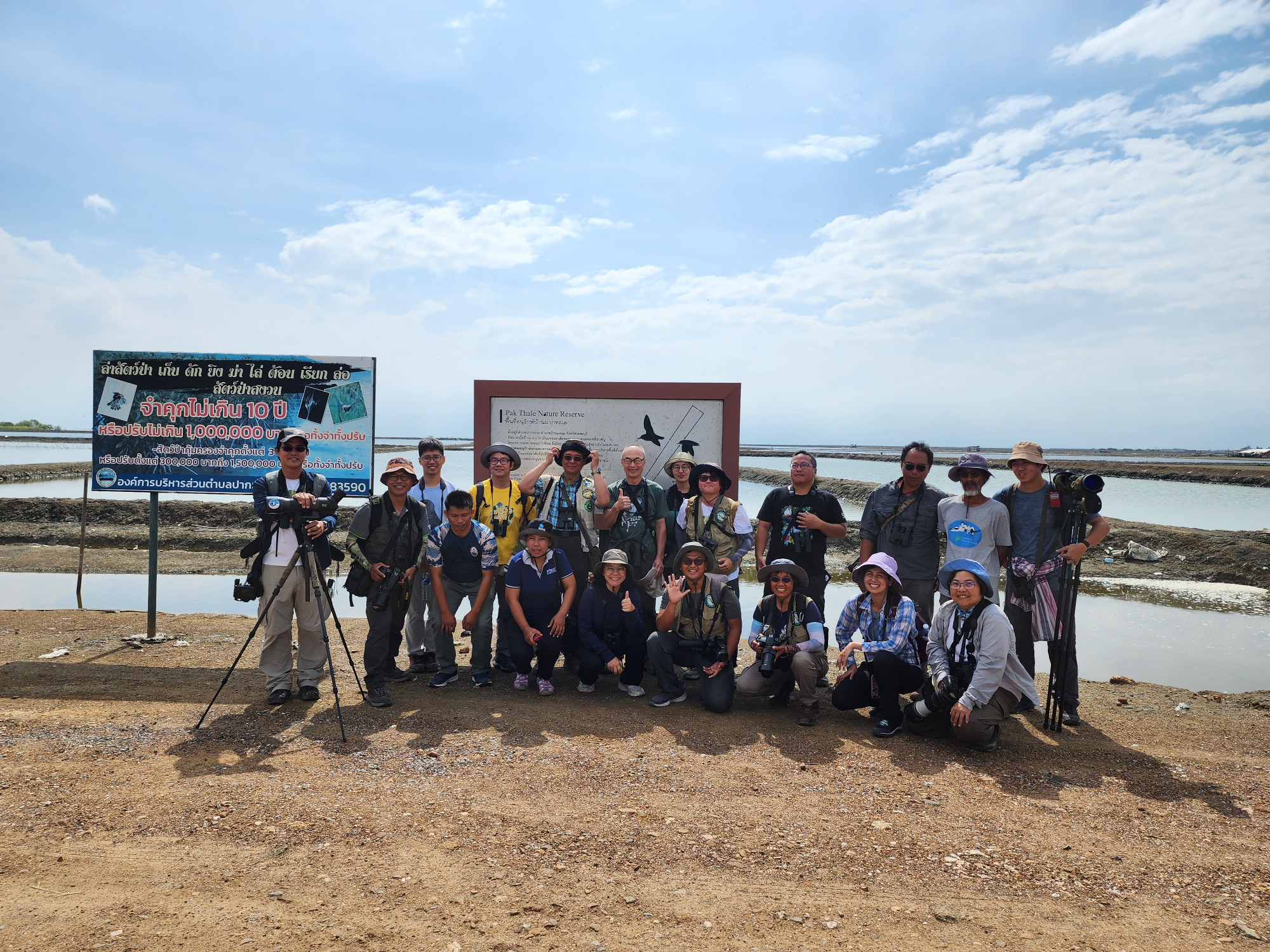
Pak Thale Nature Reserve
By Khwankhao Sinhaseni / Executive Director of Bird Conservation Society of Thailand
The Taiwan Wild Bird Federation (TWBF) and the alliance of conservation groups from Taiwan focusing on salt pan wetland conservation visited the Bird Conservation Society of Thailand (BCST) for three days from 14-16 November 2023. They came to experience and learn about key sites for shorebird conservation in privately-owned protected areas in Thailand. Traditional salt pans provide great habitat for shorebirds and create benefits for humans through salt products at Ban Pak Thale Nature Reserve, Petch Buri Province and Ban Kok Kham Community Conservation Group, Samut Sakorn Province.
The delegation was led by TWBF president Chang Jui-lin and TWBF director of international affairs Scott Pursner. Alliance organizations included the TWBF, Wild Bird Society of Tainan, the Black-faced Spoonbill Conservation Association, the Taiwan Environmental & Planning Association, and the Taiwan Environmental & Planning Association. Other attendees represented the Kaohsiung Wild Bird Society and the Taiwan Biodiversity Research Institute. In total about 14 visitors from Taiwan came, meeting with six BCST core staff, six local government representatives, five community leaders of Bam Pak Thale and another four community leaders of Ban Kok Kham. The purpose was to share experiences on salt pan wetland management as well as challenges and opportunities for shorebird conservation.
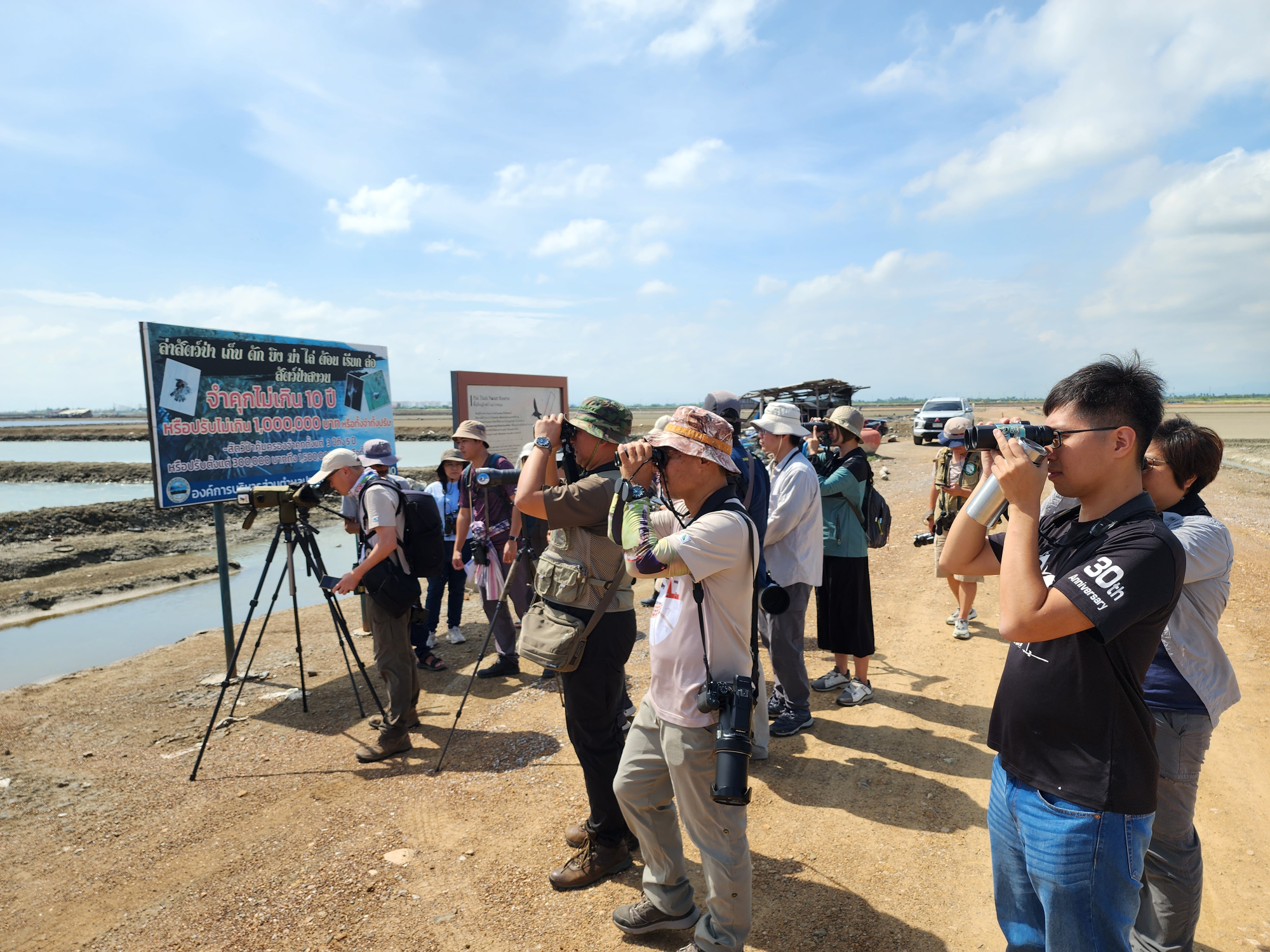
Bird watching with a local guide at Pak Thale Nature Reserve
Salt pan wetlands are a unique semi-manmade habitat which provides great roosting and foraging for many shorebird species. Thailand has many important wetlands for waterbirds in the East Asia-Australasian Flyway, especially coastal wetlands. This includes the intertidal mudflats and salt pans of the Inner Gulf of Thailand south of Bangkok which support species like the globally threatened Spoon-billed Sandpiper (Calidris pygmaeus) and Nordmanns Greenshank (Tringa guttifer). One of the most outstanding sites in the Inner Gulf is the Laem Pak Bia and Pak Thale flyway site in Phetchaburi Province. In 2019, BCST and other key stakeholders worked to strengthen area habitat protection by purchasing about 7ha for shorebird conservation. This made it one of the first sites in Southeast Asia owned by non-government actors. Called the Pak Thale Nature Reserve, BCST's goals for the salt pans included improving site management and working closely with local communities to engage with them on long-term protection of the wetland.
The TWBF and the rest of the team from Taiwan visited Pak Thale Nature Reserve for birdwatching and to meet Pak Thale community leaders. In their talks the group learned about site management, nature-based tourism, and the development of a program for training local bird guides. Moreover, an official meeting with local government agencies, the Department of Marine and Coastal Resource (DMCR) and Ban Laem Sub-district Administration Office (TAO), was organized by BCST. The officials were interested in learning about ways they could improve nature-based tourism by highlighting the iconic Spoon-billed Sandpiper and develop local industry for products related to natural sea salt and aquaculture (clams, crabs etc.). The goal of these actions is to attract more tourists and generate income for the local community. They hope it can be done through working with BCST to promote migratory birds as well as adding value to the sea salt cultivated there.
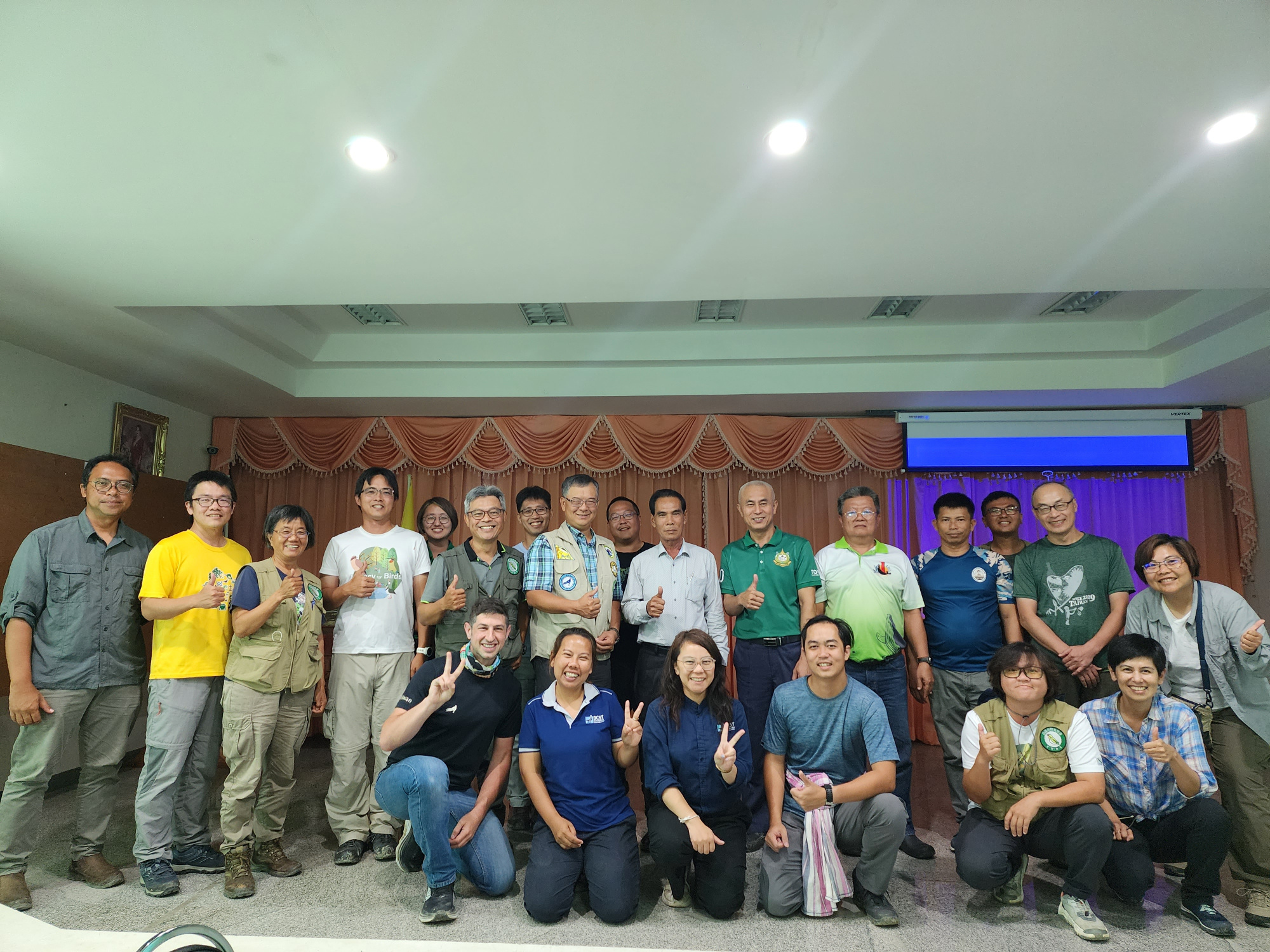
Official meeting with local government at Ban Pak Thale, TAO Office
Apart from visiting Pak Thale, the team also had the opportunity to see the royal project Laem Pak Bai Research Center. There, wastewater from Petcha Buri municipality is treated by aquatic plants and mangrove forests before being released into the sea. The habitat is also good for nature-based tourism as many bird species such as cormorant and egret can be seen there. Moreover, night walks are possible for seeing reptiles, nocturnal birds etc.
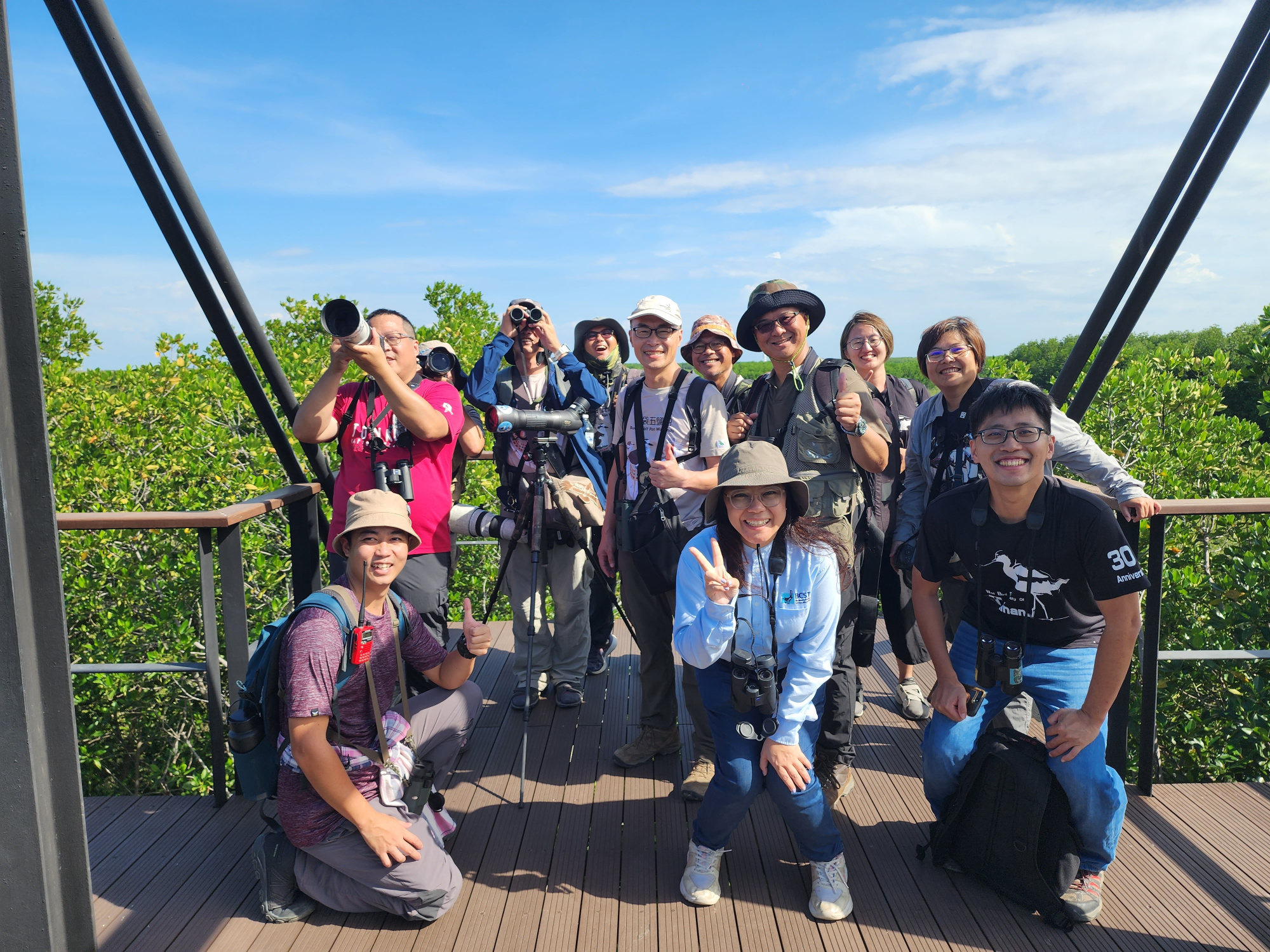
Mangrove forests at the water treatment and research center site
On the last day, the team visited Ban Kok Kham Shorebird Conservation Group for bird watching and experience sharing. The KKSCG team talked about how they fought some mega projects such as solar farms and tollway road construction in the salt pans by using data on endangered shorebird species and their habitats in the area. In fact, just that morning, everyone was lucky enough to see Spoon-billed Sandpipers up close in the salt pan next to the education center.
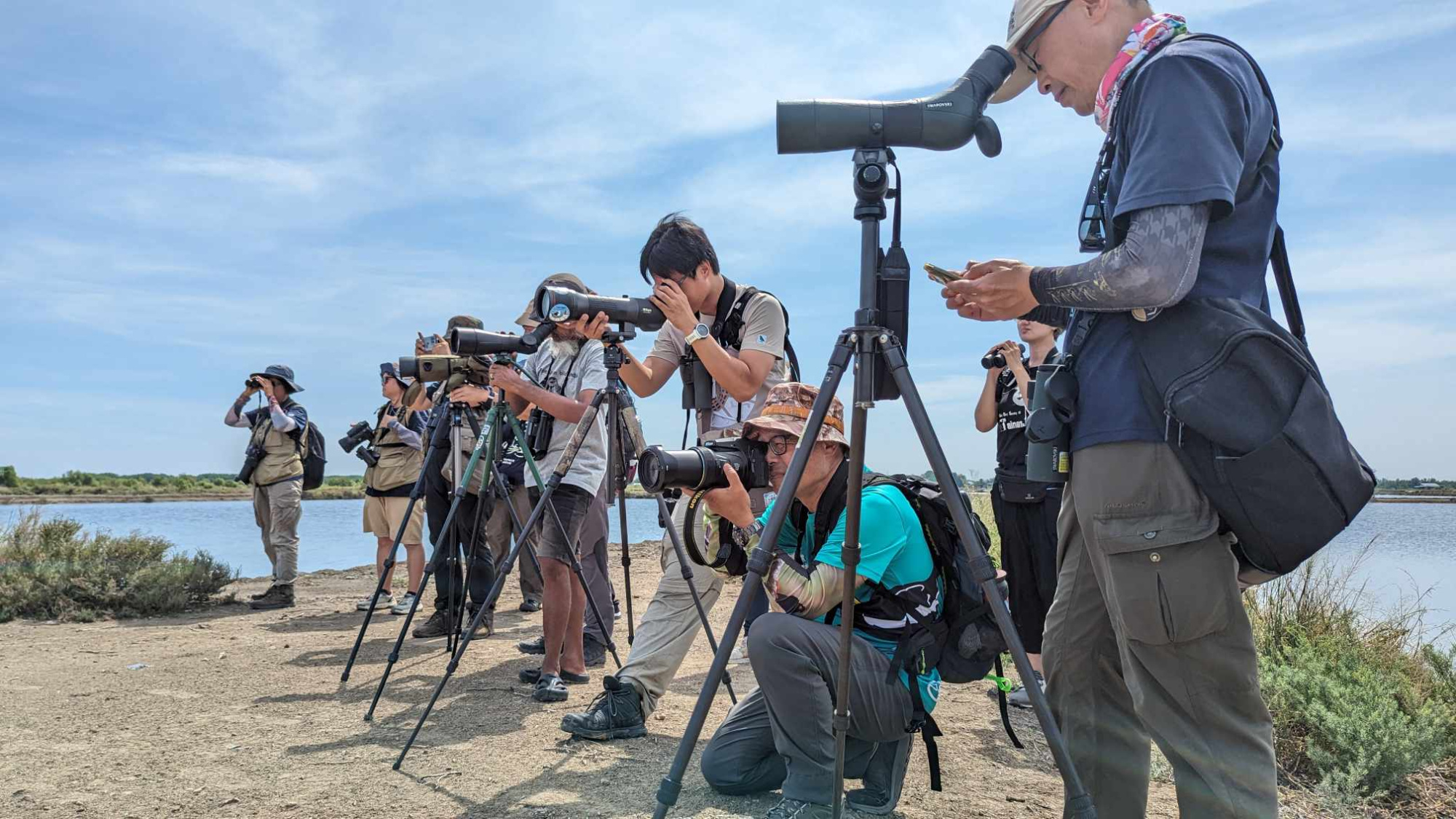
Kok Kham Center of Community Conservation Group
In the afternoon we visited a sea salt soap and spa product production center managed by a Kok Kham women's group. We also attended a small workshop on how to make the soap. The women also explained the process of salt production and how the area is managed.
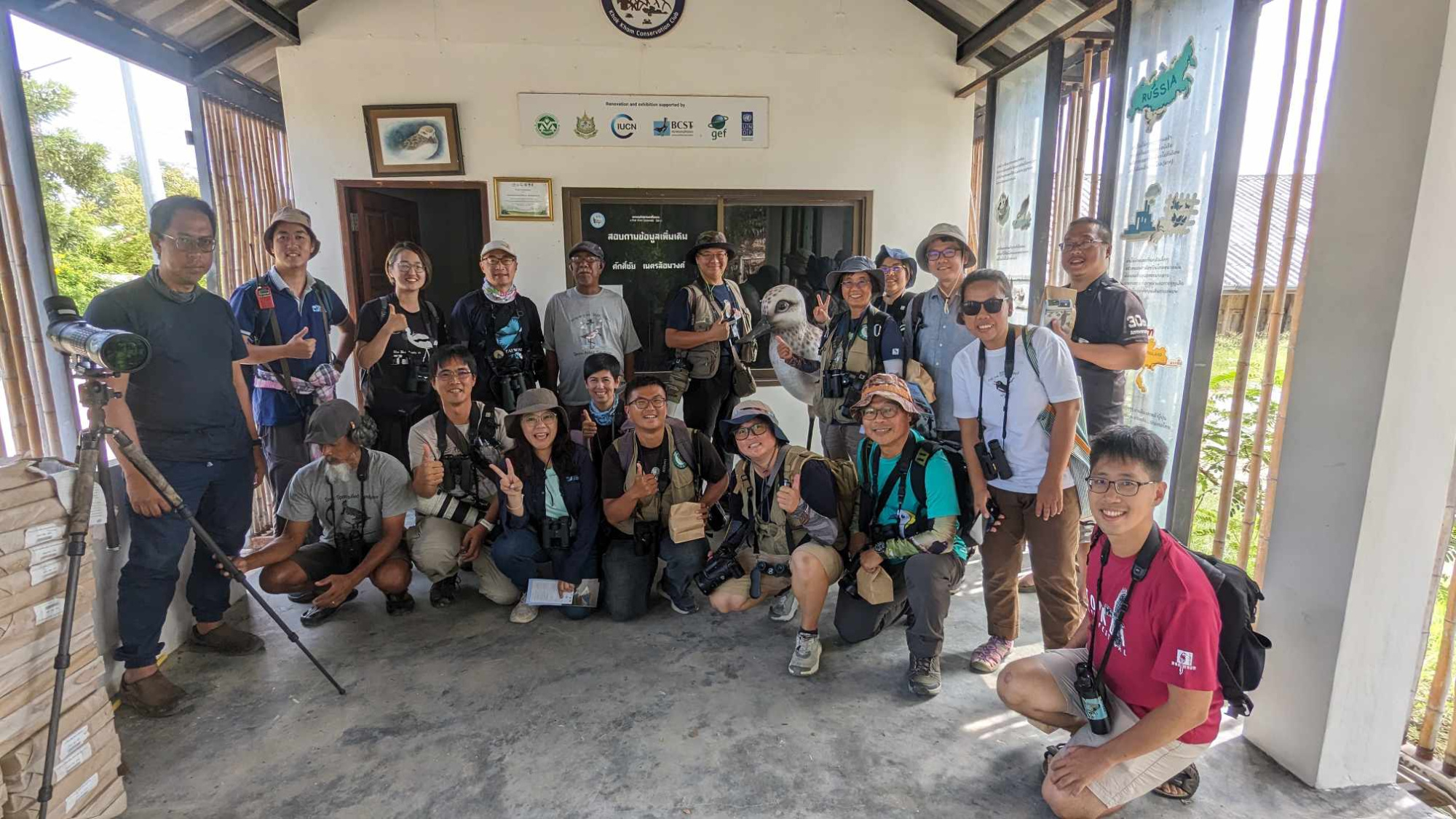 Visit to Women''s Group producing sea salt soap and spa products
Visit to Women''s Group producing sea salt soap and spa products
At the end of these three days, BCST and the Taiwan team had shared a lot of experiences on managing salt pans to benefit birds and humans via working with the government, using scientific data, and engaging with the community. The goals for everyone were the same, conserve birds and their habitat while working to help generate income for the community. We all agreed this mission is too great for one organization, so we should collaborate more and support each other's efforts in order to make our work more impactful for birds and our planet.
Bird Society of Tainan, the Black-faced Spoonbill Conservation Association, the Taiwan Environmental & Planning Association, and the Taiwan Environmental & Planning Association. Other attendees represented the Kaohsiung Wild Bird Society and the Taiwan Biodiversity Research Institute. In total about 14 visitors from Taiwan came, meeting with six BCST core staff, six local government representatives, five community leaders of Bam Pak Thale and another four community leaders of Ban Kok Kham. The purpose was to share experiences on salt pan wetland management as well as challenges and opportunities for shorebird conservation.
